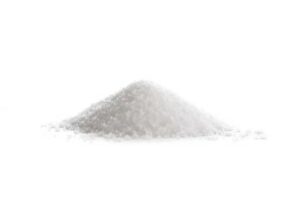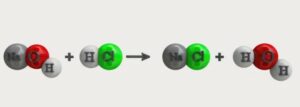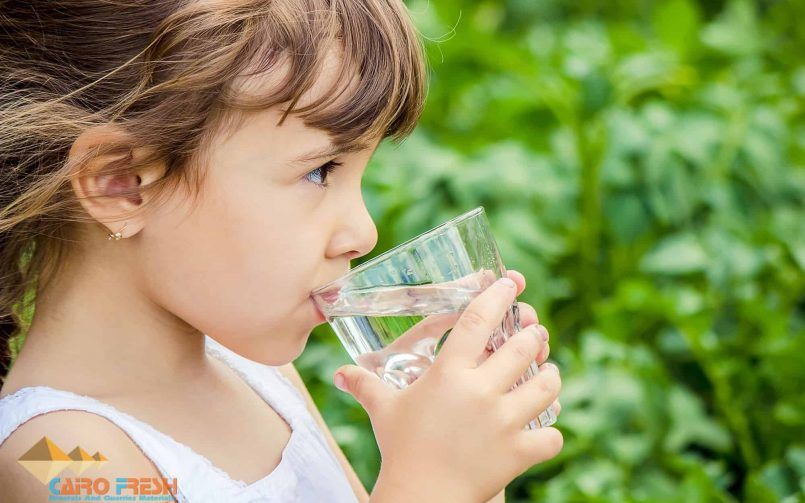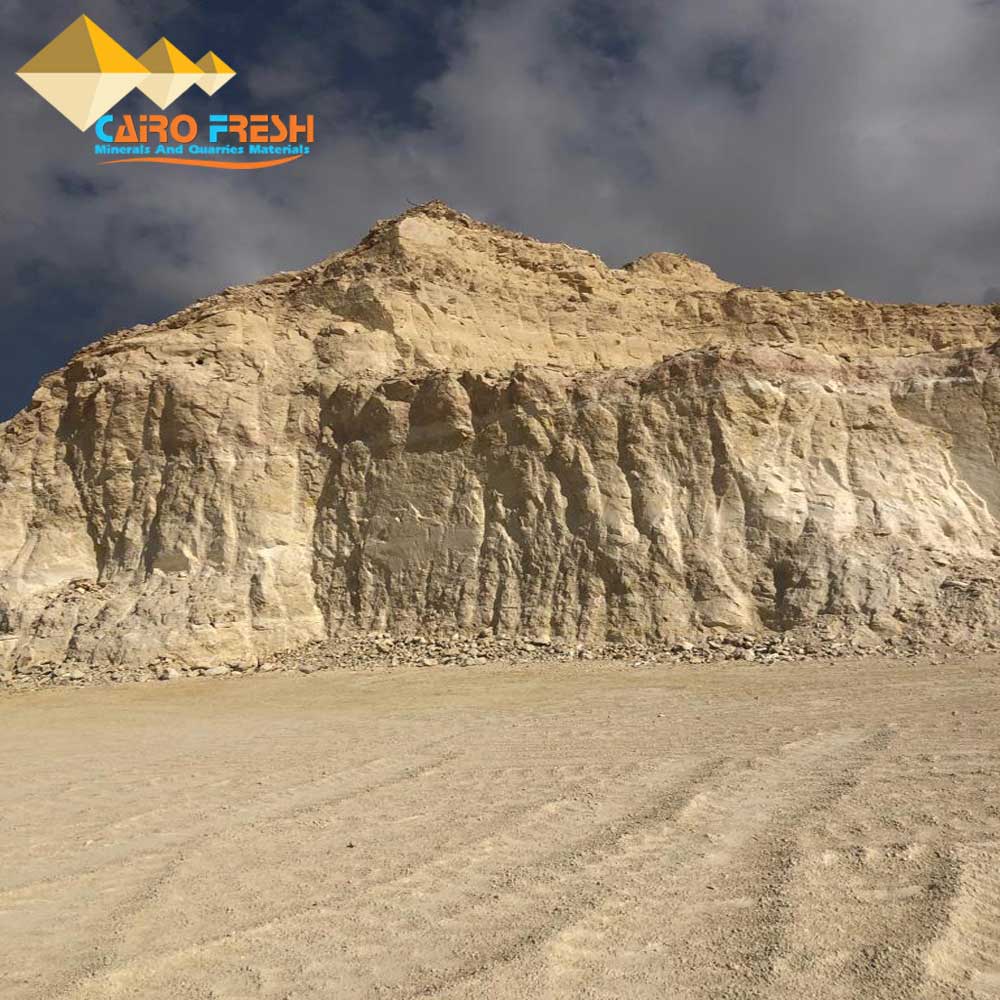Power of Caustic Soda
SECTION 1: Identification of the substance/mixture and of the company/undertaking
1.1. Product identifier
Product name :CAUSTIC SODA
Chemical name :SODIUM HYDROXIDE
Product number :DD.44.15
REACH registration number 01-2119457892-27-0130
CAS number EC number : 215-185-5
1.2. Relevant identified uses of the substance or mixture and uses advised against
| Identified uses | In rayon ,In pulp, textile, rubber, Aluminium and food industry, petroleum industry,In manufacturing of soaps and detergents, and in water treatment.There is no specific information on the use not recommended. |
| Uses advised against | No specific uses advised against are identified. |
1.3. Details of the supplier of the safety data sheet
Supplier :Cairo fresh Export and Import
Hay El-Moghazy, Abo Hammad,
El Sharqia, Egypt
Contact person :www.cairominerals.com
1.4. Emergency telephone number
Emergency telephone :Phone: +201222406487

SECTION 2: Hazards identification of Caustic soda
2.1. Classification of the substance or mixture Classification (EC 1272/2008)
Physical hazards Not Classified
| Health hazards | Skin Corr. 1A – H314 Eye Dam. 1 – H318 |
| Environmental hazards 2.2. Label elements | Not Classified |
| EC number Hazard pictograms | 215-185-5 |
| Signal word | Danger |
| Hazard statements | H314 Causes severe skin burns and eye damage. |
| Precautionary statements | P260 Do not breathe vapour/ spray. P280 Wear protective gloves/ protective clothing/ eye protection/ face protection. P303+P361+P353 IF ON SKIN (or hair): Take off immediately all contaminated clothing. Rinse skin with water or shower. P305+P351+P338 IF IN EYES: Rinse cautiously with water for several minutes. Remove contact lenses, if present and easy to do. Continue rinsing. P310 Immediately call a POISON CENTER/ doctor. P405 Store locked up. P501 Dispose of contents/ container in accordance with national regulations. |
| Contains | sodium hydroxide |
2.3. Other hazards of Caustic soda
This product does not contain any substances classified as PBT or vPvB.
SECTION 3: Composition/information on ingredients of Caustic soda
3.2. Mixtures
| Sodium hydroxide | 47-48 | |
| CAS number: 1310-73-2 | EC number: 215-185-5 | |
| Classification Skin Corr. 1A – H314 Eye Dam. 1 – H318 |
The full text for all hazard statements is displayed in Section 16.
SECTION 4: First aid measures
4.1. Description of first aid measures of Caustic soda
General information
Immediate medical attention is crucial in cases of chemical burns. Therefore, it is necessary to show the Safety Data Sheet to medical personnel. Chemical burns must always be treated by a trained physician.
Inhalation
In case of contamination, it is vital to remove the affected person from the source of contamination. Next, it is necessary to move the person to an area with fresh air and ensure that they are positioned comfortably for breathing. Additionally, it is essential to loosen tight clothing and maintain an open airway. If breathing becomes difficult, the affected person may get assistance from properly trained personnel. In case the person loses consciousness, they should be placed on their side in the recovery position, and their breathing must be monitored.
Ingestion
If the contamination affects the mouth, it is essential to rinse the mouth thoroughly with water. If the affected person wears dentures, it is necessary to remove them. Additionally, it is crucial to give a few small glasses of water or milk to drink. However, if the individual feels sick, it is crucial to stop, and vomiting may be dangerous. Medical personnel should be consulted before inducing vomiting. When vomiting occurs, the individual’s head should remain low to prevent vomit from entering the lungs. An unconscious person should be moved to fresh air and kept warm and comfortable for breathing. It is necessary to place an unconscious individual on their side in the recovery position, ensuring that their airway is open.
Skin contact
When dealing with skin contamination, it is essential to remove the substance from the skin immediately. All contaminated clothing should be taken off immediately. Additionally, it is necessary to rinse the skin thoroughly with water for at least 15 minutes. Medical attention is crucial in cases of chemical burns, and only a physician should treat them.
Eye contact
In case of eye contamination, it is essential to rinse the eyes immediately with plenty of water. Contact lenses should be removed, and the eyelids should be held open for at least ten minutes.
Protection of first aiders
First aid personnel should always use appropriate protective equipment during any rescue. If volatile contaminants are suspected, first aid personnel should wear an appropriate respirator or self-contained breathing apparatus. Before removing contaminated clothing, it is necessary to wash them thoroughly with water or wear gloves. In some cases, carrying out mouth-to-mouth resuscitation may be dangerous, and first aid personnel should seek medical assistance
4.2. Most important symptoms and effects, both acute and delayed
General information:
It is important to note that Section 11 provides comprehensive information on the health hazards associated with this substance. The severity of symptoms described may vary depending on the concentration and duration of exposure.
Inhalation:
When exposed to this substance, a single encounter may cause severe irritation of the nose and throat. Prolonged overexposure may lead to respiratory tract corrosion.
Ingestion:
When ingested, this substance may cause chemical burns in the mouth, esophagus, and stomach. Long-term exposure may result in severe stomach pain, nausea, and vomiting.
Skin contact:
Contact with this substance can result in severe burns, causing pain, irritation, and redness. Blisters may also develop following overexposure.
Eye contact:
It is important to note that this substance causes serious eye damage. Symptoms associated with overexposure may include pain, reddening, and profuse watering of the eyes.
4.3. Indication of any immediate medical attention and special treatment needed Notes for the doctor : Treat symptomatically.
SECTION 5: Firefighting measures
5.1. Extinguishing media
Suitable extinguishing media
The product is not flammable. Extinguish with alcohol-resistant foam, carbon dioxide, dry powder or water fog. Use fire-extinguishing media suitable for the surrounding fire.
Unsuitable extinguishing Do not use water jet as an extinguisher, as this will spread the fire.
5.2. Special hazards arising from the substance or mixture
| Specific hazards | Containers can burst violently or explode when heated, due to excessive pressure build-up. Severe corrosive hazard. Water used for fire extinguishing, which has been in contact with the product, may be corrosive. |
| Hazardous combustion products | Thermal decomposition or combustion products may include the following substances: Very toxic or corrosive gases or vapors. |
5.3. Advice for firefighters
| Protective actions during firefighting | Avoid breathing fire gases or vapors. Evacuate area. Keep upwind to avoid inhalation of gases, vapors, fumes, and smoke. Cool containers exposed to heat with water spray and remove them from the fire area if it can be done without risk. Cool containers exposed to flames with water until well after the fire is out. If a leak or spill has not ignited, use water spray to disperse vapors and protect men stopping the leak. Avoid discharge to the aquatic environment. Control run-off water by containing and keeping it out of sewers and watercourses. If risk of water pollution occurs, notify appropriate authorities. |
| Special protective equipment for firefighters | Regular protection may not be safe. Wear a chemical protective suit. Wear positive-pressure self-contained breathing apparatus (SCBA) and appropriate protective clothing. Firefighter’s clothing conforming to European standard EN469 (including helmets, protective boots, and gloves) will provide a basic level of protection for chemical incidents. |
SECTION 6: Accidental release measures
6.1. Personal precautions, protective equipment and emergency procedures
Personal precautions :- No action shall be taken without appropriate training or involving any personal risk. Keep unnecessary and unprotected personnel away from the spillage. Wear protective clothing as described in Section 8 of this safety data sheet. Koruyucu gözlük, neopren eldiven, lastik bot , özel solunum aygıtı kullanın. Follow precautions for safe handling described in this safety data sheet. Wash thoroughly after dealing with a spillage. Ensure procedures and training for emergency decontamination and disposal are in place. Do not touch or walk into spilled material. Avoid inhalation of vapors and spray/mists. Use suitable respiratory protection if ventilation is inadequate. Avoid contact with skin and eyes. Avoid contact with contaminated tools and objects.
6.2. Environmental precautions
Environmental precautions The product may affect the acidity (pH) of water which may have hazardous effects on aquatic organisms. Avoid discharge to the aquatic environment. Toprak ve yüzey sularının kirlenmesini önlemek için izole edilmelidir .
6.3. Methods and material for containment and cleaning up
Methods for cleaning up Wear protective clothing as described in Section 8 of this safety data sheet. Clear up spills immediately and dispose of waste safely. This product is corrosive. Small Spillages: Collect spillage. Large Spillages: Absorb spillage with non-combustible, absorbent material. The contaminated absorbent may pose the same hazard as the spilled material. Collect and place in suitable waste disposal containers and seal securely. Label the containers containing waste and contaminated materials and remove from the area as soon as possible. Flush contaminated area with plenty of water. Yıkama sularını arıtma tesisine gönderin. Wash thoroughly after dealing with a spillage. For waste disposal, see Section 13.
6.4. Reference to other sections
Reference to other sections For personal protection, see Section 8. See Section 11 for additional information on health hazards. See Section 12 for additional information on ecological hazards. For waste disposal, see Section 13.
SECTION 7: Handling and storage of Caustic soda
7.1. Precautions for safe handling
| Usage precautions | Read and follow manufacturer’s recommendations. Wear protective clothing as described in Section 8 of this safety data sheet. Keep away from food, drink and animal feeding stuffs. Handle all packages and containers carefully to minimise spills. Keep container tightly sealed when not in use. Avoid the formation of mists. This product is corrosive. Immediate first aid is imperative. Do not handle until all safety precautions have been read and understood. Never handle broken packages without protective equipment. reuse empty containers is not good. Çok kuvvetli alkali olduğundan yükleme, boşaltma ve kullanımda çok dikkatli olun ve özel talimatlara göre hareket edin. Dolu kaplar yerinden oynatılmadan önce ağzının kapalı olup olmadığını kontrol edin. Ambalajı çok dikkatli açın. Kullanım sırasında mutlaka gözlük, eldiven gibi koruyucu tedbirleri alın. |
| Advice on general occupational hygiene | Wash promptly if skin becomes contaminated. Take off contaminated clothing. Wash contaminated clothing before reuse. Do not eat, drink or smoke when using this product. Wash at the end of each work shift and before eating, smoking and using the toilet. Change work clothing daily before leaving workplace. |
7.2. Conditions for safe storage, including any incompatibilities of Caustic soda
| Storage precautions | Boiling point: 136- 137°C Crystallization point (% 50) : 9 C Storage temperatures: Stores must be heated by steam under 18 C. Temperature range must be between 29 – 38 C. It creates corrosion and iron rust occurs above this temperature. The substance is hygroscopic and carbonate is formed together with moisture and carbon dioxide in contact with air. Surroundings must be well ventilated when it is stored in closed area. Store away from incompatible materials (see Section 10). Store locked up. Keep only in the original container. container tightly closed, in a cool, well ventilated place. Keep containers upright. Protect containers from damage. Bund storage facilities to prevent soil and water pollution in the event of spillage. The storage area floor should be leak-tight, jointless and not absorbent. Karbon çeliğinden yapılmış varil, kara ve deniz tankerleri ile taşınır. Metallerden, alevlenir sıvılardan ve organik halojenlerden uzak tutulmalıdır. |
| Storage class | Corrosive storage. |
| Shelf life 7.3. Specific end use(s) | 2 years |
| Specific end use(s) | The identified uses for this product are detailed in Section 1.2. |
SECTION 8: Exposure controls/Personal protection
8.1. Control parameters Occupational exposure limits of Caustic soda
Sodium hydroxide
Short-term exposure limit (15-minute): WEL 2 mg/m³
WEL = Workplace Exposure Limit
8.2. Exposure controls of Caustic soda
Protective equipment
Appropriate engineering controls | Ensure there is adequate ventilation and check the effectiveness of ventilation or other control measures and the necessity of respiratory protective equipment by conducting personal, workplace environment, or biological monitoring. Use process enclosures, local exhaust ventilation, or other engineering controls, as the primary means to minimize worker exposure. Only use personal protective equipment if engineering control measures cannot control worker exposure adequately. Regularly inspect and maintain control measures and provide training to operatives to minimize exposure. Ürünün mesleki maruziyet sınır değerlerinin üzerine çıkılma riskini önlemek için çalışma ortamının çok iyi havalandırıldığından ve temizlendiğinden emin olunmalıdır. Gerekli alanlarda hava filtreleme sistemi NIOSH ve CEN sistemlerine uygun kurulmalıdır. Kullanım alanı ürünün çevreye bulaşmasını engelleyecek şekilde tasarlanmalıdır. |
Personal protection | The product is corrosive. Direct contact with the skin or eyes should be avoided as this may cause severe burns. Avoid inhalation of vapor. Use only in well ventilated areas. Remove contaminated clothing immediately. Hands should be washed at the end of work and at work. Do not eat or drink any food when using this substance. |
Eye/face protection | Eyewear complying with an approved standard should be worn if a risk assessment indicates eye contact is possible. Personal protective equipment for eye and face protection should comply with European Standard EN166. Wear tight-fitting, chemical splash goggles or face shield. If inhalation hazards exist, a full-face respirator may be required instead. |
Hand protection | Chemical-resistant, impervious gloves complying with an approved standard should be worn if a risk assessment indicates skin contact is possible. To protect hands from chemicals, gloves should comply with European Standard EN374. TS/EN 374’e uygun, sızdırmaz, lastik, alkali dirençli, PVC ya da neopren eldiven giyilerek elle teması engellenmelidir. Considering the data specified by the glove manufacturer, check during use that the gloves are retaining their protective properties and change them as soon as any deterioration is detected. Frequent changes are recommended. |
Other skin and body protection | Appropriate footwear and additional protective clothing complying with an approved standard should be worn if a risk assessment indicates skin contamination is possible. Vücudu tümüyle örten uygun koruyucu kıyafet, tulum, lastik bot giyilmelidir. |
Hygiene measures | Provide eyewash station and safety shower. Contaminated work clothing should not be allowed out of the workplace. Wash contaminated clothing before reuse. Clean equipment and the work area every day. Good personal hygiene procedures should be implemented. Wash at the end of each work shift and before eating, smoking and using the toilet. When using do not eat, drink or smoke. Preventive industrial medical examinations should be carried out. Warn cleaning personnel of any hazardous properties of the product. |
| Respiratory protection | Respiratory protection complying with an approved standard should be worn if a risk assessment indicates inhalation of contaminants is possible. Havadaki konsantrasyonu TLV limitlerinin üzerindeyse maske kullanımı gerekir.100 ppm’e kadar olan konsantrasyonlarda yüksek verimli özel tip maske gereklidir. Bu seviyenin üzerinde ise solunum cihazı kullanılmalıdır. Ensure all respiratory protective equipment is suitable for its intended use and is ‘CE’-marked. Check that the respirator fits tightly and the filter is changed regularly. Gas and combination filter cartridges should comply with European Standard EN14387. Full face mask respirators with replaceable filter cartridges should comply with European Standard EN136. Half mask and quarter mask respirators with replaceable filter cartridges should comply with European Standard EN140. |
To mitigate environmental exposure, it is important to keep the container tightly sealed when not in use. In addition, check emissions from ventilation or work process controls equipment to ensure their compliance with the requirements of environmental protection legislation. In some cases, fume scrubbers, filters, or engineering modifications to the process equipment may be necessary to reduce emissions to acceptable levels. It is crucial to comply with the obligations set forth by the current environmental protection legislation in its entirety.
| SECTION 9: Physical and chemical properties | |
| 9.1. Information on basic physical and chemical properties Appearance Colourless | |
| Odour | Odourless. |
| pH | 14 at 20°C |
| Melting point | +9 C |
| Initial boiling point and range | 137°C |
| Flash point | Not applicable. |
| Flammability (solid, gas) | Not applicable. |
| Vapour pressure | <2,4 |
| Bulk density | 1,500-1,512 kg/m³ |
| Solubility(ies) | Miscible with water. |
| SECTION 10: Stability and reactivity |

10.1. Reactivity
Reactivity :See the other subsections of this section for further details.
10.2. Chemical stability
Stability :Stable at normal ambient temperatures and when used as recommended. Stable under the
prescribed storage conditions.
10.3. Possibility of hazardous reactions of Caustic soda
Possibility of hazardous : No potentially hazardous reactions known.
reactions
10.4. Conditions to avoid
Conditions to avoid There are no known conditions that are likely to result in a hazardous situation.
10.5. Incompatible materials
Materials to avoid No specific material or group of materials is likely to react with the product to produce a hazardous situation.
10.6. Hazardous decomposition products
Hazardous decomposition :-
Does not decompose when used and stored as recommended. Thermal decomposition or products combustion products may include the following substances: Corrosive gases or vapors.
SECTION 11: Toxicological information
11.1. Information on toxicological effects Acute toxicity – oral
| Notes (oral LD₅₀) Acute toxicity – dermal | Based on available data the classification criteria are not met. |
| Notes (dermal LD₅₀) Acute toxicity – inhalation | Based on available data the classification criteria are not met. |
| Notes (inhalation LC₅₀) Skin corrosion/irritation | Based on available data the classification criteria are not met. |
| Animal data Serious eye damage/irritation | Skin Corr. 1A – H314 Causes severe burns. |
| Serious eye damage/irritation Respiratory sensitisation | Eye Dam. 1 – H318 Corrosive to skin. Corrosivity to eyes is assumed. |
| Respiratory sensitisation Skin sensitisation | Based on available data the classification criteria are not met. |
| Skin sensitisation Germ cell mutagenicity | Based on available data the classification criteria are not met. |
| Genotoxicity – in vitro Carcinogenicity | Based on available data the classification criteria are not met. |
| Carcinogenicity | Based on available data the classification criteria are not met. |
| IARC carcinogenicity Reproductive toxicity | None of the ingredients are listed or exempt. |
| Reproductive toxicity – fertility | Based on available data the classification criteria are not met. |
| Reproductive toxicity development | Based on available data the classification criteria are not met. |
Specific target organ toxicity – single exposure
STOT – single exposure Not classified as a specific target organ toxicant after a single exposure.
Specific target organ toxicity – repeated exposure
| STOT – repeated exposure Aspiration hazard | Not classified as a specific target organ toxicant after repeated exposure. |
| Aspiration hazard | Based on available data the classification criteria are not met. |
| General information | The severity of the symptoms described will vary dependent on the concentration and the length of exposure. |
| Inhalation | Corrosive to the respiratory tract. Symptoms following overexposure may include the following: Severe irritation of nose and throat. |
| Ingestion | May cause chemical burns in mouth, oesophagus and stomach. Symptoms following overexposure may include the following: Severe stomach pain. Nausea, vomiting. |
| Skin contact | Causes severe burns. Symptoms following overexposure may include the following: Pain or irritation. Redness. Blistering may occur. |
| Eye contact | Causes serious eye damage. Symptoms following overexposure may include the following: Pain. Profuse watering of the eyes. Redness. |
Route of exposure Ingestion Inhalation Skin and/or eye contact Target organs No specific target organs known.
Açıklamalar Explanations
SECTION 12: Ecological information
| Ecotoxicity 12.1. Toxicity | Not regarded as dangerous for the environment. However, large or frequent spills may have hazardous effects on the environment. |
| Toxicity Acute aquatic toxicity | Based on available data the classification criteria are not met. |
| Acute toxicity – fish | LC₅₀, 96 hours: 125 mg/l, Freshwater fish |
| Acute toxicity – aquatic invertebrates | EC₀, 48 hours: 100 mg/l, Daphnia magna |
12.2. Persistence and degradability
Persistence and degradability The degradability of the product is not known.
12.3. Bioaccumulative potential
Bioaccumulative potential No data available on bioaccumulation.
12.4. Mobility in soil
Mobility No data available.
12.5. Results of PBT and vPvB assessment of Caustic soda
Results of PBT and vPvB This product does not contain any substances classified as PBT or vPvB.
assessment
12.6. Other adverse effects
Other adverse effects None known.
| SECTION 13: Disposal considerations | |
| 13.1. Waste treatment methods General information | Minimize or avoid waste generation whenever possible, and reuse or recycle products whenever possible. Dispose of both the material and its container safely. Always comply with environmental protection and waste disposal legislation, as well as any requirements of the local authority when disposing of this product, process solutions, residues, and by-products. When handling waste, consider the same safety precautions as when handling the product. Be cautious when handling emptied containers that have not been thoroughly cleaned or rinsed out, as empty containers or liners may retain some product residues and therefore be potentially hazardous. |
| Disposal methods | To ensure responsible waste management, it is imperative not to empty any products into drains. Instead, a licensed waste disposal contractor should dispose of surplus products and those that cannot be recycled. Designated containers, labelled with their contents, must collect waste, residues, empty containers, discarded work clothes, and contaminated cleaning materials. When considering the appropriate disposal method, recycling should always be the first option. Incineration or landfill should only be considered when recycling is not feasible. |
| SECTION 14: Transport information | |
General For limited quantity packaging/limited load information, consult the relevant modal documentation using the data shown in this section.
14.1. UN number
| (ADR/RID) | 1824 |
| (IMDG) | 1824 |
| (ICAO) | 1824 |
| (ADN) | 1824 |
14.2. UN proper shipping name
Proper shipping name SODIUM HYDROXIDE SOLUTION (ADR/RID)
(IMDG) SODIUM HYDROXIDE SOLUTION
(ICAO) SODIUM HYDROXIDE SOLUTION
(ADN) SODIUM HYDROXIDE SOLUTION
14.3. Transport hazard class(es)
ADR/RID
class : 8
classification code : C5
label : 8
IMDG class: 8
ICAO class/division: 8
ADN class: 8
Transport labels
14.4. Packing group
ADR/RID packing group II
IMDG packing group II
ICAO packing group II
ADN packing group II
14.5. Environmental hazards of Caustic soda
Environmentally hazardous substance/marine pollutant No.
14.6. Special precautions for user of Caustic soda
Always transport in closed containers that are upright and secure. Ensure that persons transporting the product know what to do in the event of an accident or spillage.
EmS F-A, S-B
ADR transport category 2
Emergency Action Code 2R
Hazard Identification Number 80
(ADR/RID)
For more information please don’t hesitate to contact us


